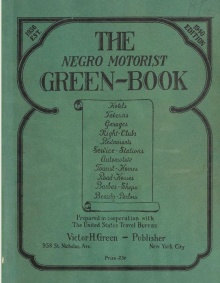Historic preservation studio informs major East Side development, wins planning award

A preservation planning studio considered non-normative practices in historic preservation through an analysis of a former armory in Buffalo's Pratt-Willert neighborhood. The historic site - now a public works garage for the City of Buffalo - served as a space for community gatherings and events in the early 1900s. It is now being converted into a mixed-use development, including affordable housing and an indoor sports complex.
by Jared Lane (MUP '23)
Published July 5, 2023
A recent urban planning studio at UB has generated critical insights on alternative approaches to historic preservation for marginalized communities, receiving the attention of the professional planning community and directly informing an adaptive reuse project under way on Buffalo’s East Side.
Aerial image of Broadway Garage in its current form, with outline of existing fabric from the original armory.
“Convergent Histories on Broadway: An Exploration of Normative and Non-Normative Approaches to Historic Preservation & Interpretation” was developed in Spring 2021 as a joint studio in urban planning, architecture, real estate development and historic preservation. It was directed by clinical associate professor of urban planning Kerry Traynor.
Offered as the annual Master of Urban Planning preservation planning studio, the project examined the Pratt-Willert neighborhood on Buffalo’s East Side, which holds historical significance as a safe space for Blacks navigating a segregated America during the Great Migration.
Specifically, the neighborhood is home to dozens of former businesses referenced in Victor Hugo’s “Negro Motorist Green Books,” travel guides published annually between 1936 and 1966 as a directory of establishments that were welcoming to Blacks. However, most of these sites do not exist today, largely due to policies and programs –the urban renewal movement of the 1960s, for example – that targeted marginalized communities.
Dozens of establishments in Buffalo's Pratt-Willert neighborhood were featured in the “Negro Motorist Green Books,” travel guides published annually between 1936 and 1966 as a directory of establishments that were welcoming to Blacks.
Traynor, a nationally recognized preservation planner based in Buffalo, says the idea for this studio arose out of a sense of loss and frustration over how so many important stories and histories get lost in traditional approaches to historic preservation.
“The importance and significance of people’s lives and events, specifically marginalized communities, are often forgotten when there is a lack of historic fabric that preservationists traditionally use as a vehicle to tell stories. The traditional approaches to historic preservation to tell the story or people, place, and placemaking don't always work.”
“In the case of the Green Books, the value of place – and the stories of place – are critical to understanding the history of the people who lived, worked, traveled to and visited these sites as “safe spaces” for African Americans. The challenge is how do we preserve this in a way that goes beyond historic markers?
Instead, Traynor invited students to focus their interpretive analysis on a major historic site in the neighborhood slated for redevelopment as part of Buffalo’s emerging African American Heritage Corridor.
The City of Buffalo Department of Public Works Garage at 201 Broadway was first built in 1858 as an armory, serving as home to the 65th Regiment through the Civil War. In the early 1900s, the site was converted into the Broadway Auditorium, serving as a space for community gatherings and events, from masquerade balls and circuses to political rallies and some of the city’s first professional sporting events. While much of the site was largely destroyed by a 1948 fire, the original armory façade remains. The site is the oldest standing building where professional ice hockey was played and hosted prominent figures such as jazz singer Ella Fitzgerald, boxer Joe Lewis and former U.S. President Theodore Roosevelt.
Initiating a request for proposals in 2022, the city is now working with a development team to convert the 5.3-acre site into “Broadway Barns,” a mixed-used complex with affordable housing, indoor sports fields, a community center and a café. The studio report was submitted in late 2021 to the city and Office of Strategic Planning, directly informing the site’s redevelopment.
The remaining historic fabric of the Broadway Auditorium includes the main armory/event space, brick buttresses and the clerestory windows and steel truss support system.
Combining archival analysis of 30 Negro Motorist Green Book editions, historic maps of the city, and current demographic and market research, students developed recommendations for the reuse of the former armory, including zoning and land use proposals for the site in relationship to the surrounding neighborhood, as well as programming and interpretive strategies that integrate the forgotten history of the Broadway Armory and the former sites of Green Books business listings. Much of their research was informed by the planning efforts of the Michigan Street African American Heritage Corridor Commission, which has identified the restoration of the Broadway Auditorium as a priority project.
“Rehabilitating the Broadway Barns provides an opportunity to make place for the community,” says Traynor. “The opportunity to activate this place as a new “safe space” for the community embodies the spirit of the Green Books, where safe places for people of color were identified.”
The studio served as testing ground for non-normative strategies of preservation, which seek to expand the limitations behind the normative practices while still aligning with the guidelines in the National Register of Historic Places. These non-normative strategies raise questions on which histories have been “written out” and communicate important parts of history that planners, preservationists, and developers often overlook.
Among the report’s recommendations being pursued is obtaining local landmark status for the Broadway Barns property, to prevent any of the original fabric from being destroyed. The city’s Preservation Buffalo Niagara group is leading that effort, now under consideration by the city’s planning board.
“Convergent Histories on Broadway” was recognized in 2022 by the New York State Upstate Chapter of the American Planning Association with a best practice award in the category of “Comprehensive Planning – Student Project.”


